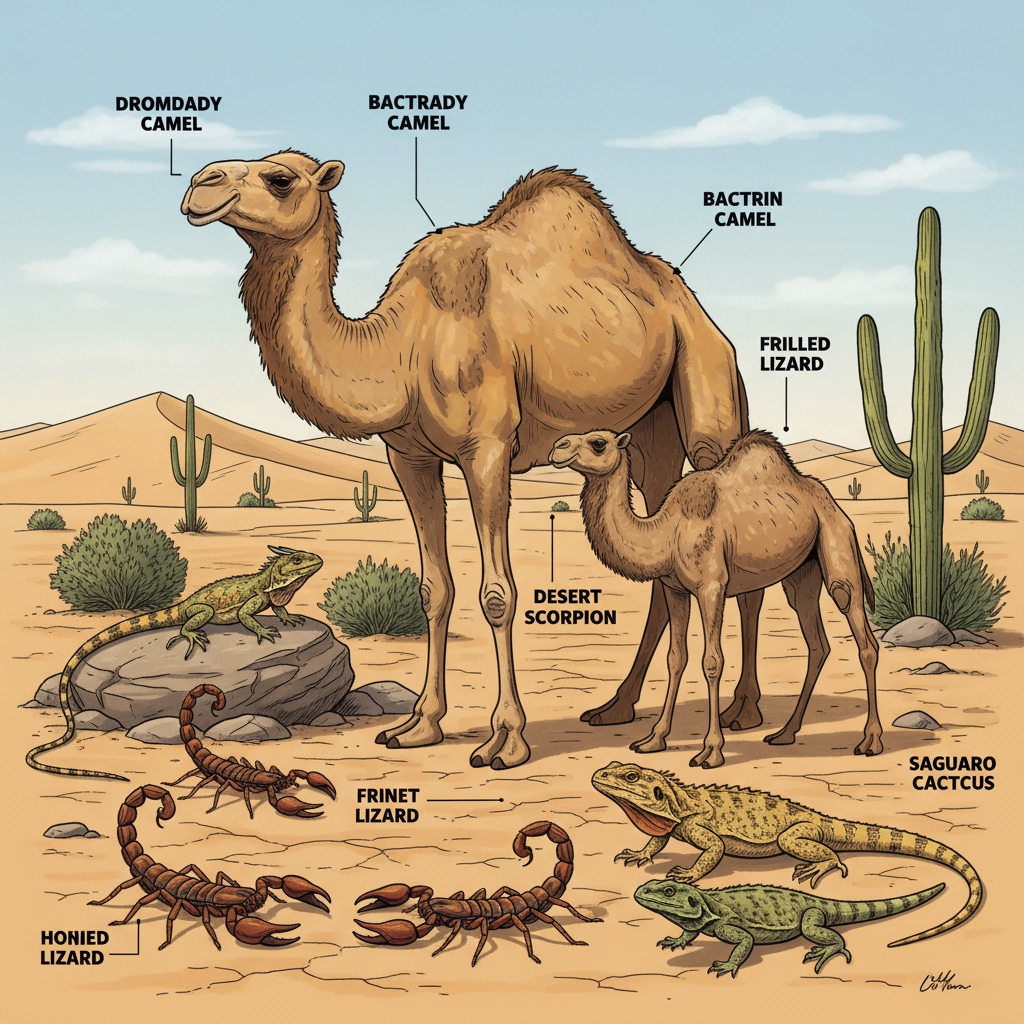Desert animals, with their unique evolutionary adaptations and survival mechanisms, are a fascinating subject of study. The harsh desert environment, characterized by extreme heat, scarce water, and limited food resources, has forced these creatures to develop extraordinary ways to survive.

For example, camels are well-known for their ability to store fat in their humps, which can be broken down into water and energy during long periods without food or water. This adaptation allows them to endure the harsh desert conditions.
The Wonders of Evolutionary Adaptations
Over time, desert animals have evolved a variety of physical and behavioral traits to cope with the challenges of their environment. Many desert animals have developed light-colored fur or scales. This helps them reflect sunlight and stay cool. For instance, the fennec fox has large ears that not only help it hear prey underground but also dissipate heat. According to Wikipedia’s Desert Ecosystem page, these adaptations are the result of natural selection, where organisms with favorable traits are more likely to survive and reproduce.

Survival Mechanisms in the Arid Landscape
In addition to physical adaptations, desert animals have also developed unique survival mechanisms. Some animals are nocturnal, which means they are active at night when the temperatures are cooler. This reduces their water loss through sweating or evaporation. Scorpions, for example, hide in burrows during the day and come out at night to hunt. As stated on Britannica’s Desert Biology page, this behavioral adaptation helps them conserve energy and water.
These evolutionary adaptations and survival mechanisms of desert animals not only allow them to thrive in the desert but also provide valuable insights for scientific education. By studying these creatures, students can gain a deeper understanding of the principles of evolution, adaptation, and the delicate balance of ecosystems. It’s a captivating journey into the world of nature’s ingenuity. Readability guidance: The key points here are the various adaptations and survival strategies of desert animals. These help us understand how they’ve evolved to fit their arid environment. We’ve used simple language and provided examples to make it easier to comprehend. Transition words like ‘for example’ and ‘in addition’ help connect ideas smoothly.


